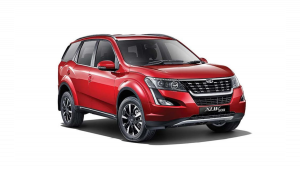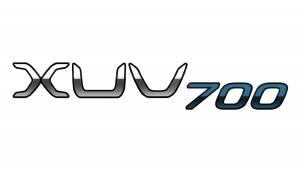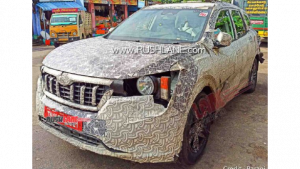Tata Aria and Mahindra XUV500 at the top of the world
It's been five and a half hours now and still no sign of them. I'm sitting alone in the Aria at the Pangong lake, hours away from any form of communication and I haven't the faintest idea as to where these people are. We haven't been in touch for two days now thanks to the sheer lack of communication in the Himalayas. You see, I was already in Ladakh while Ashok and crew were driving up from Delhi in the XUV500. The plan was for them to meet me on the 29th at 10am in Pangyong. It's now 3:30 in the afternoon and clearly things aren't going according to plan.
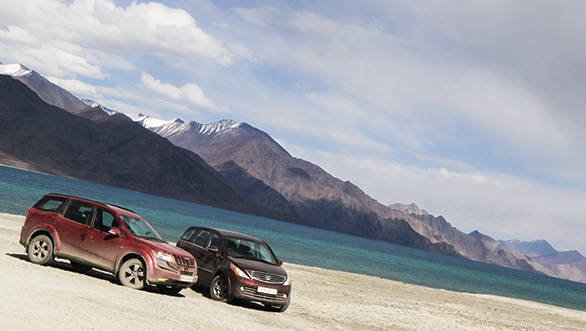 Many Himalayan lakes are, unusually, alkaline and briny
Many Himalayan lakes are, unusually, alkaline and briny
Nervousness progresses to genuine worry and I decide to drive to a nearby hamlet in search of a satellite phone. But when I'm politely told there's no such thing by the bemused locals I start to formulate an escape strategy. I need to head back to Leh if they don't show up and I must, at all costs, clear the treacherous Chang la pass before nightfall. A quick calculation reveals I have to be leaving immediately to avoid driving in the dark. I decide to do one last recce of the road along the lake to see whether they might have passed me when I was at the village before heading for Leh. Ten minutes along the lake side and nothing. Just short of giving up and heading for Leh I spot the XUV's unmistakable LED head lamps frantically flashing away in my mirror. They'd made it and in completely Bollywood style timing!
After the politest welcome I could muster (still too colourful for print) Ashok introduced me to the guys who'd be keeping us company for the next few days. Lallie Sangha, his brother Udaibir and their cousin Sanam who I later found out were all great drivers and had plenty of experience with rallying. But more importantly they knew this side of the country like no one else and we couldn't have done this trip without their help. With introductions out of the way we got down to business. First order was to tank up both cars with diesel from a jerry can; we weren't going to find anymore fuel for the next two days.
But why were we here? Long time readers will remember how we took Tata and Mahindra's finest on a tour of the high altitude mountain lakes in Ladakh back in 2002. Well the game has moved on significantly since then and both companies have new, flagship products. The Aria and XUV500 have taken over from the Safari and Bolero that we drove back then. So have things really changed much?
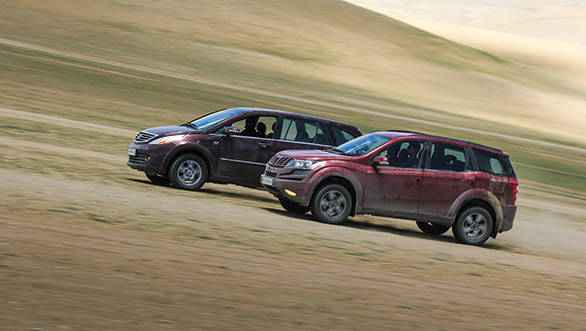 Rear wheel drive in the Aria meant plenty of fooling around in the gravel. It also meant fixing punctured tyres after. The XUV with ESP had no such problems
Rear wheel drive in the Aria meant plenty of fooling around in the gravel. It also meant fixing punctured tyres after. The XUV with ESP had no such problems
Well, what's seen the least change has to be the terrain. It's still achingly beautiful and properly treacherous, not to mention the ultimate test of a vehicle's reliability and ability to withstand abuse. Connectivity is still about the same. The BRO repeatedly builds roads and nature relentlessly destroys them; a constant vicious cycle. The number of tourists however has risen, especially at Pangong after its inclusion in Amir Khan's 3 Idiots made the lake a popular sightseeing spot with tourists. But that's hardly any reason to justify a visit. Pangong lake is one of the most beautiful and breathtaking sights I have ever taken in. First of all its sheer size blows you away. This is the world's largest and highest saltwater lake. It stretches for a massive 134km and only 40 per cent of it lies in India. The rest is in China-occupied territory. While the lake is completely frozen over in winter the warmer months have the water glistening in a range of vibrant colours from near purples to shimmering emerald greens. And the colours constantly change with changes in the sun's angle or if it gets blotted out behind some of those phenomenal cloud formations that are so common here.
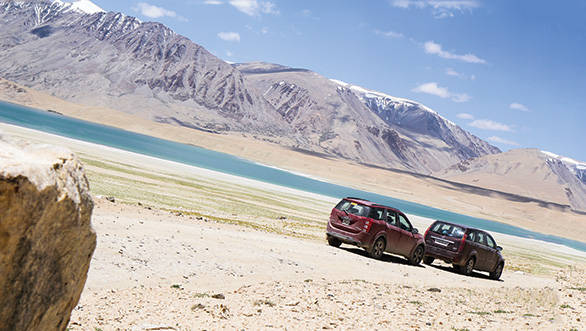 With the crisp air and great light, we barely needed to touch the photos before printing
With the crisp air and great light, we barely needed to touch the photos before printing
So that's about the location, what of the cars? Well both vehicles were big steps ahead for their makers. The manufacturers were venturing into unexplored territories of design, technology and most importantly, price. When the Aria was launched at the 2010 Auto Expo it attracted plenty of attention for being India's first crossover, having four driven wheels and costing over Rs 15 lakh on road. The XUV was unveiled in late 2011 and it instantly garnered massive hype, which a good 10 months later still hasn't died down. Like the Aria it was also built on a new platform but Mahindra took it a step ahead. Unlike the Aria's ladder frame X2 chassis Mahindra developed an all new front wheel drive monocoque set up for the XUV. They then gave it a highly, almost overtly styled exterior and stuffed it to the gills with features. The result was all Mahindra could have dreamed of, it was an instant commercial hit. We liked it too. A 'normal' comparison in civilization already proved that the Mahindra is the better vehicle. However a torture test in the Himalayas should see if the car stands up to all that hype
Once Ashok was done with the photographs at Pangong we headed on to Mahe. After about 45 minutes of driving along the lake side we found a nice flat gravelly stretch where someone thought (I'd like to claim the benefit of doubt) it would be fun to start drifting the Aria. Soon enough Lallie's in the driver's seat showing us how it should be done. By the time he was done the rear left tyre was ripped clean off the wheel. So here we were in the middle of nowhere, under surveillance of both India and China (we could see Chinese territory in the distance and they most certainly could see us). To make matters worse it was close to sunset by the time we'd rather sheepishly jacked up the car, fixed the tyre and got off. We were fortunate not to have been picked up (or shot!) by the army for hooning around in a high security area.
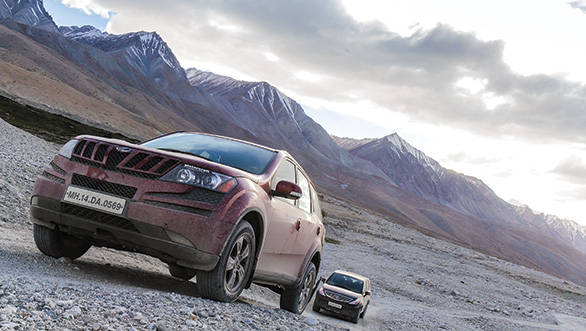 The Indo-Chinese border is within sight at Pangong Tso
The Indo-Chinese border is within sight at Pangong Tso
After the Aria had all four tyres back on we stopped at the small border town of Chushul for some good ol' Maggi before driving on. The sun had set by now but we kept driving on. It was a pity we had to drive this section at night because this was turning out to be a fascinating road. There was fine sand all over the edges of the road and if we didn't know better we could swear we were driving through Rajasthan. We didn't really have a plan and after hours of driving along in the general direction of the next lakes we hit the border town of Nyoma. It was about 10 in the night but we found a place to crash thanks to the very friendly commanding officer of the army camp who let us sleep in the infirmary after insisting that we join the officers for dinner. We were really grateful for his hospitality without which we'd have ended up on the roadside in tents. Not nice when the temperature drops to single digits, on the other side of zero, at night.
We'd spent quite some time in both cars by now and the immediate impression is that the XUV500 feels much fresher, almost an entire generation newer. Right from the extroverted looks with their many swoops, slashes and bulges to the smart, feature filled interiors, the XUV takes the cake. The Aria on the other hand captures your attention with its sheer bulk. It's a massive car but its familiar Tata face and sober slab sided styling means its far more mellow than the XUV, which despite being a bit overstyled in my opinion is still the design I'd go with. The XUV also has very nice feeling interiors with an ergonomic layout, buttons that feel good to use, well bolstered seats and a generally more modern atmosphere.
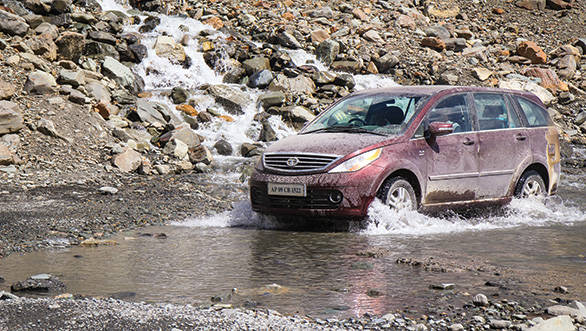 Melting snow meant plenty of water crossings
Melting snow meant plenty of water crossings
Where the Aria scores is the fun to drive factor. The thought of drifting a top heavy two ton plus crossover on tarmac doesn't seem very enticing. But all that changes in the dirt. When driving fast on the dirt trails that are so common in this region the Aria with its rear wheel drive bias is far more fun than the XUV. The heavy tail swings out easily and you can comfortably steer the car on throttle. Slowing down however can be tricky. You can really feel the car's weight and it carries a lot of momentum. The ABS kicks in early as well and you need to use the gears to slow down in a hurry. The XUV on the other hand requires a completely different approach; come into a corner fast and lift off the throttle to get the rear chasing the front. However the ESP on the XUV is quite effective and keeps the vehicle going in the intended direction. ESP may cut the fun on the Mahindra but no ESP in the Aria ( we had the mid spec Pleasure variant) ends up cutting the tyres. We ended up having two punctures in the Aria whose Goodyear Wranglers just couldn't handle the abuse as well as the Mahindra's Bridgestone Duelers.
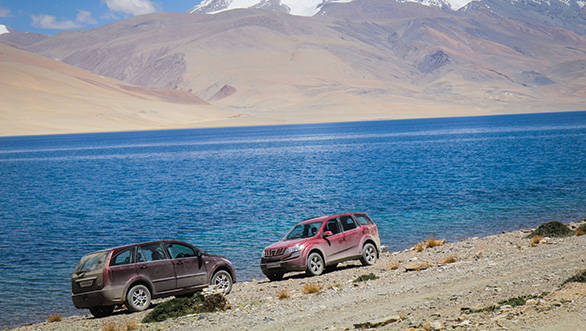 At 700 square km, Pangong Tso is world's highest salt water lake, and one of the largest
At 700 square km, Pangong Tso is world's highest salt water lake, and one of the largest
The Aria continues to excel in real world conditions with a more refined and cosseting ride quality and better noise insulation (both engine and suspension). It actually feels quite like a big Volvo bus with plenty of pitch and roll but a plush ride. The XUV rides quite nicely too but has a firmer feel to it. In terms of handling the XUV benefited from its stiff setup but ran into understeer faster, a natural offshoot of being primarily front wheel driven. Another offshoot is torque steer; the XUV has quite a bit of it. Gear shift quality in the Aria is better again with a slightly more precise feel. Both cars use an AVL designed 2.2-litre diesel engine that produces 140PS but the XUV has 10Nm more torque with a total of 330Nm. The power delivery however is very different. The XUV benefits from a six-speed gearbox which means closer spaced ratios (Lallie would have liked them closer still). The Aria seemed quite affected by the high altitude and showed considerable lag below 2000rpm, even in first gear. While the Tata revved quicker, the Mahindra had a much better low end and was far more drivable, if running a little flat when the revs crossed 4000rpm. Fuel consumption on the Mahindra was also quite lower than the Tata's.
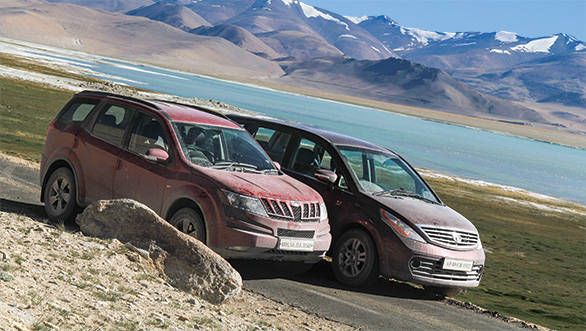 Very narrow roads make two vehicles a tight squeeze
Very narrow roads make two vehicles a tight squeeze
Our first lake for the day was the Thatsang Karu Tso or Kiagar Tso. This is also a briny lake, only much smaller than Pangong. Getting down to the lake bed was close to impossible so we parked the cars on the road, took a few shots and soaked in the countryside before heading on to the more famous Tso Moriri which was only about ten km ahead. At an altitude of 15,075 feet Tso Moriri is the largest high altitude lake that's entirely in Indian territory. The lake is fed by both streams and springs. Despite its high salt content this lake supports plenty of wildlife like Himalayan Asses (apparently it's illegal to drive fast alongside them as they won't stop running till their lungs burst!), marmots, plenty of birds and even wolves and snow leopards.
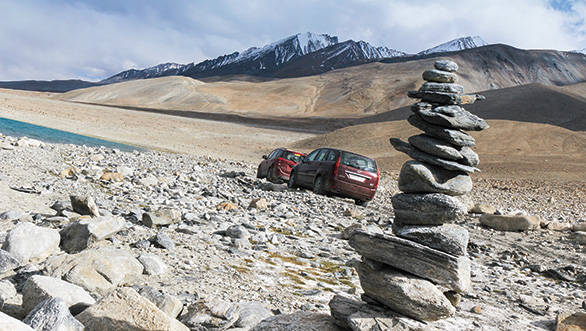 Locals believe its good luck to pile stones as high as possible like this
Locals believe its good luck to pile stones as high as possible like this
Driving down to the water's edge here meant navigating some very deceptive sandy surfaces. Getting stuck is mighty easy and bogged down tourist vehicles are common sights. It's times like these that help you appreciate the vehicles' all-wheel drive system. A little button on the Aria's dash lets you switch to 4x2 but leave it in 4x4 mode and the 'torque on demand' system takes care of things for you. For the most part only the rear wheels are driven. Should the system detect slip, it sends some of the torque to the front wheels and restricts it where it is being wasted by wheel spin. Of course the system is not as capable as a proper manual transfer case with low ratio but it gets this family mover quite far off the beaten path. The XUV we were driving was all wheel drive as well and was never too fazed off road with good traction. At 200mm both cars had identical ground clearance but the XUV had a much better approach angle and hardly ever scraped its nose or bottomed out. Nevertheless we jacked up both cars' tyre pressures to 50PSI to help matters in the muck. Unfortunately at the end of it all we didn't go all the way to the water because the challenging marshy terrain meant we only had a fifty-fifty chance of getting there (and back) without a tow. That's not a smart chance to take in the middle of practically nowhere.
The road upto Tso Moriri was all gravel but also fairly smooth and very quick. Which of course ended up in the Aria getting a big sidewall puncture that we couldn't fix (the nearest puncture repair shop was a good eight hours away). So we bolted on the spare wheel and headed off to the last two lakes of our trip, the Startsapuk Tso and Tso Kar. Along the way the Aria's ECU decided it'd had enough of the abuse we were putting the cars through and went on strike. It displayed a message saying that engine performance was restricted and played an annoying beep that lasted for the whole day. Fortunately the performance stayed the same and we could keep to the schedule. After Tso Kar we'd just about had enough of the wilderness and headed in the direction of civilization. Driving through the More plains in the Aria showed that it's a stable vehicle at high speed and a comfortable high speed cruiser. Both cars had nice stereos although the XUV couldn't quite handle reading USB drives on rough roads. Despite the XUV being slightly stiffer it was the car we ended up wanting to drive at the end of the long day. The light steering, comfortable interiors and torquey engine just made it more of a pleasure to drive. Its cornering lamps really helped when driving down the 21 hairpin bends in the Gata loops. The hill descent control made life easier when taking some of the crazy short cuts cutting through the bends.
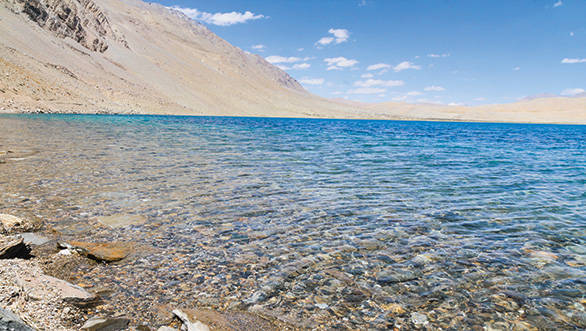 Himalayan lakes have an amazing hue that changes with changes in the sun's angle
Himalayan lakes have an amazing hue that changes with changes in the sun's angle
After a biting cold (we're talking numb extremities) night at the Army camp at Sarchu we pushed for civilization at Manali. All went great right upto Keylong where the power steering failed in the Aria thanks to a ruptured oil seal. All the power steering fluid promptly leaked out and the steering went as hard as it gets when the engine is off. Nothing could be done and the only thing to do was muscle the car up Rohtang pass to Manali, a task that Sanam, thankfully volunteered to do! Sitting in the XUV in the regular traffic jams at Rohtang we ended up killing time watching videos on the cars screen that in addition to a rather impressive navigation system also supports video playback upto speeds of ten kmph. We really appreciated the electric folding mirrors in both cars on the tight Rohtang roads as well.
Manali allowed us all some much deserved R&R and we left for Chandigarh quite late in the morning. We dropped the Aria off at the Tata dealership in Mandi because it was nearly undriveable with such hard steering. The five of us and our luggage crammed into the XUV but were still comfortable. After dropping Lallie and Sanam off at Chandigarh Udaibir, Ashok and I pushed for Delhi. We made it by three in the morning and were absolutely wiped out. Can't say the same for the XUV though, After a week of torture all it lost was two mudflaps and one of my CDs that the system refused to eject.
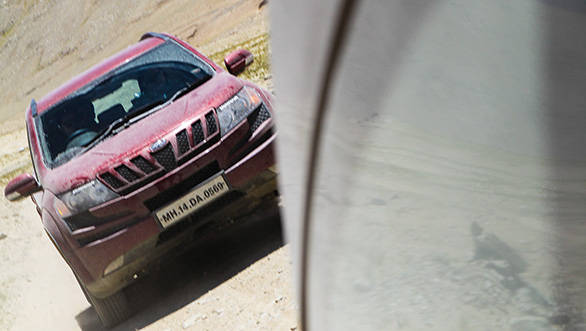 Despite being front wheel drive, the XUV had no trouble traversing all the harsh terrain we came across
Despite being front wheel drive, the XUV had no trouble traversing all the harsh terrain we came across
So there we are, back at base having covered 2000km of some of the most unfriendly terrain that the country has to offer. And the two valiant warriors, the vehicles not us, have lived to tell the tale. This trip has confirmed one thing - both the Aria and the XUV500, in their 4x4 avatars, have the beans to handle such extreme conditions. With just the right amount of TLC, both these vehicles are equally capable of taking you to these breathtaking lakes that we experienced. If it weren't for our tomfoolery, the Aria would have been in a better shape than we left it in. It will still get you where most cars wont dare go, which is good news if you have a large family.
And so in case the travel bug of the fiercest kind has bitten you and the lakes in Ladakh beckon, the Aria and XUV500 are more than willing to take you and your family there.
Photo credits: Ashok George & Sanam Sekhon
Starts Rs 12.23 Lakhs
2179cc
Automatic
140
320
-NA-
